Summit highlights rental electrification challenges
10 October 2024
More dialogue and collaboration between rental companies, power providers and OEMs will be key in accelerating the energy transition in the rental sector. That was the clear message from the Rental eSummit held in Amsterdam on 17 September, organised by Briggs & Stratton’s Vanguard business.
Speaking at the event, which was attended by more than 80 rental managers, OEMs and rental associations, Jon Overman, the newly promoted CEO of HSS’s traditional hire division, said evolving battery technology and new fuel types were making buying decisions more complicated; “Manufacturers are trying to make a different battery, a better battery, a different charger…maybe collaboration at the manufacturer level could actually bring down the cost of change and accelerate the change into more sustainable fuels.
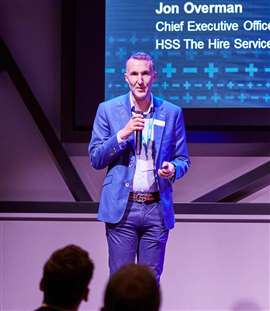 Jon Overman, CEO of HSS’s traditional hire business, at the Rental eSummit. (Photo: Briggs & Stratton)
Jon Overman, CEO of HSS’s traditional hire business, at the Rental eSummit. (Photo: Briggs & Stratton)
“We need simple specifications that help us all work more easily together. And we need great clarity on what fuel types can be used, how they’re used. What is HVO fuel? How do we dispose of lithium in a sustainable way?”
Overman said rental companies were being presented with multiple different technologies on batteries and fuels and facing requests from customers for one particular solution; “And then we risk that horrible thing for a hire company of, are we going to lose that customer if we don’t invest? What do we do next? Who do we buy from? What are we going to do with the old stuff? How do we dispose of it? It’s a really difficult decision.”
Three key challenges
Speaking on behalf of the European Rental Association’s technical committee, Klāvs Otisons said the rental industry faced three key challenges with the energy transition: the availability of low or zero emission equipment; the higher purchase price of cleaner machines; and the complexity of owning different types of equipment, with challenges on the availability of skillsets and training.
“We are in the process of understanding what is the cost and how it actually moves along with the supply chain”, said Otisons, “With asset complexity, even before the greener asset technologies came, we already are experiencing challenges when it comes to attracting good mechanics, good engineers, people to maintain and service the equipment.”
He said there was also concerns from some customers about the effectiveness of battery powered equipment and the use of new fuel types; “So there is change management that also has to be done here - cultural change and behavioral change, and that’s part of the problem. You need to be able to charge it. You need to store it in the right way. You need to discharge it in the right way, etc. Customers also see that as a challenge.”
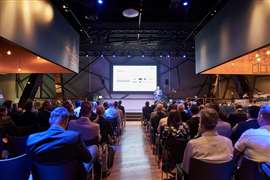 Mpore than 80 delegates attended the Rental eSummit in Amsterdam. (Photo: Briggs & Stratton)
Mpore than 80 delegates attended the Rental eSummit in Amsterdam. (Photo: Briggs & Stratton)
When it came to electrification, he said that standardisation was crucial; “We have thousands of machines and different types in our fleets. And imagine everyone has the different chargers and different connections and different protocols. All of that needs to be managed in certain way. So, standardization is key.”
Otisons added that the ERA had embarked on an energy transition project to ensure that rental companies, OEMs and end users were all talking the same language; “We have to scope the project out. We need to focus on certain things, for instance, we have not focused on the supply chain part of the equipment, how the minerals are extracted from the ground, how they’re put together, how they’re moving across the globe. We’re not focusing on the end of life.
“And we have objectives, and that’s standardisation. So, defining how the rental industry sees standardisation. What could possible solutions be? Let’s try to define the customer value, what customer value could be added in this? And [we need] a revision of total cost of ownership, an attempt to expand the ownership model that we have had until now.”
As part of the event, several manufacturers showcased their own battery powered equipment, all using Vanguard battery packs. These included an Eliot chipper/shreader, a prototype electric stump grinder from Laski, roller plate and forward plate compactors from NTC Stavebni Technika, and a mini tracked loader from Firstgreen.
Briggs & Stratton strategy
Having hosted the meeting, Briggs & Stratton took the opportunity to outline its approach to the development of batteries for equipment used in the rental industry, including the recent extension of its offer to include battery controllers and – soon to come - motors.
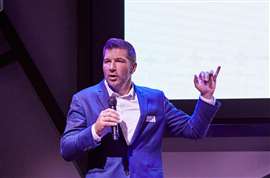 David Frank, Briggs & Stratton’s president of electrification, speaking at the Rental eSummit in Amsterdam. (Photo: Briggs & Stratton)
David Frank, Briggs & Stratton’s president of electrification, speaking at the Rental eSummit in Amsterdam. (Photo: Briggs & Stratton)
David Frank, senior vice president and president of electrification at Briggs & Stratton, told delegates; “We need a system approach and we need to be a partner with the OEMs as they go on this journey. So, we just aren’t providing the battery and saying, good luck, now go source the rest of it.
“The next part was working with the rental companies. The rental companies’ feedback to us was really clear about we need a standard solution and don’t deliver a thousand plugs to us…we need a standard plug.”
Frank told International Rental News (IRN) that there were very few battery suppliers that they hadn’t talked to about standardisation; “I think where they are on their journey is, with a lot of the companies, they started with a particular application for themselves, and they built a product that’s really good for that application.
“We had to take a different approach. So, our standards [between suppliers] aren’t quite matching up, but I do believe that the key is to keep the dialogue going and where we could probably drive better standardisation, especially around charging. That’s probably the short term. I think long term you’ll see standardisation just happen naturally.”
Frank said battery powered technology would likely evolve in the same way that engine technology has over the past century, with the end result being standard configurations of engines adopted by multiple suppliers.
He said Briggs & Stratton was aiming to provide a complete battery package for an OEM – the battery, controller and motor – particularly for smaller OEMs; “The bulk of the OEMs, they need a partner. And that’s where we see ourselves playing an important role by sitting down and understanding what they’re trying to electrify and giving them the right power solution.”
Working with 50 OEMs
The company supplies its batteries to around 50 OEMs as well as a further 42 hydraulic integrator companies who work with OEMs. “So, all of a sudden you’ll start to see a lot more electrified product”, said Frank.
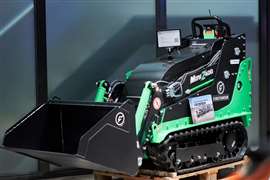 Firstgreen’s battery powered mini loader at the Rental eSummit in Amsterdam.
Firstgreen’s battery powered mini loader at the Rental eSummit in Amsterdam.
He said Briggs & Stratton was already producing hundreds of batteries every day; “The business is almost five years old. And at that point we were building in a very small facility in the back of our Milwaukee facility.
“We had a dream that within five years we were going to do $10 million. By year two, we far surpassed that. Now we have a business where we do millions and millions of dollars every month in battery sales.”
The company still has a big stake in traditional engines, of course, but Frank sees the battery business as being a natural extension of that; “Our position is that we’re a power provider and we’re agnostic to what that is. And that was a major shift in our thinking.
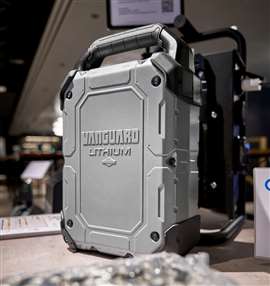 The Vanguard battery pack. (Photo: Briggs & Stratton)
The Vanguard battery pack. (Photo: Briggs & Stratton)
“We used to even think of ourselves as an engine company and then we woke up and we said, no, we’re actually a power company. We help people power stuff and the customer will decide at the end of the day what the best power solution is.”
It was clear from the day that there are challenges to overcome in the electrification process, with communication essential between supply chain partners - from end users and rental companies through to OEMs and power providers. Briggs & Stratton’s Rental eSummit was an extremely useful enabler of that conversation.
STAY CONNECTED



Receive the information you need when you need it through our world-leading magazines, newsletters and daily briefings.
CONNECT WITH THE TEAM








